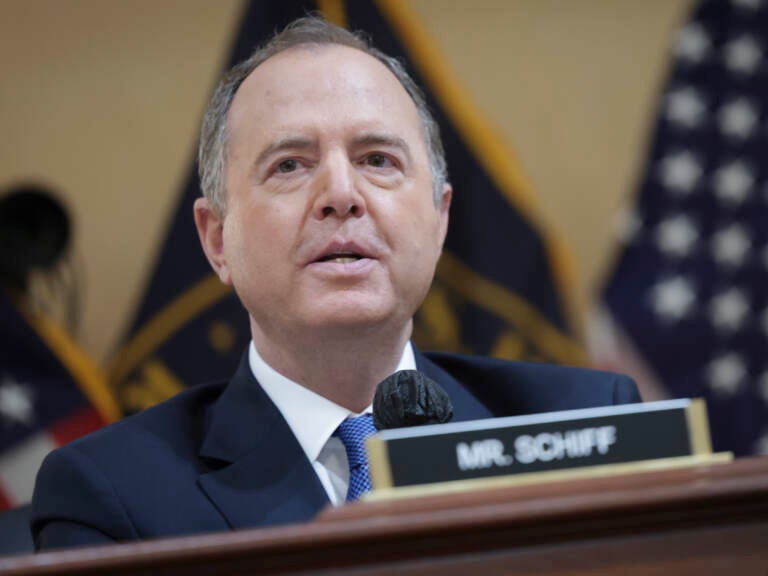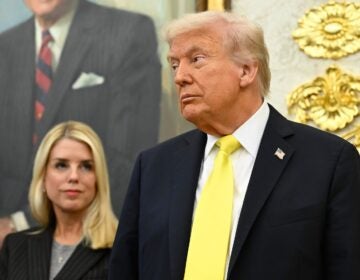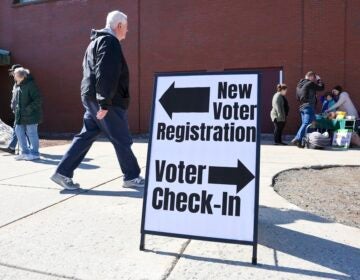The Trump campaign tried to use fake electors, says Rep. Adam Schiff

Rep. Adam Schiff delivers remarks during a hearing by the House select committee to investigate the Jan. 6 Capitol attack on Tuesday in Washington. (Kevin Dietsch/Getty Images)
As Rep. Adam Schiff reminded listeners, every four years Americans cast their votes not directly for presidential candidates but for electors pledged to those candidates to the Electoral College.
In December, electors in each state meet, cast their votes and send those votes to Congress, which meets in January to count those votes, and the winner becomes president.
Schiff spent several minutes detailing how, as he put it, former President Donald Trump and his campaign “were directly involved in advancing and coordinating the plot to replace Biden electors with fake electors not chosen by the voters.”
He said that entailed convincing fake electors to cast and submit votes through fake certificates that said they would only be used in the event that Trump won his legal challenges — but continued the scheme even after courts rejected those lawsuits. Even Trump’s own lawyers doubted the legal basis of the plan and some walked away rather than participate, he added.
He then played a video showing Casey Lucier, investigative counsel for the committee, outlining the details of that plan. She said the committee heard testimony that people close to Trump hatched a plan to organize fake electors for Trump in states that he lost in the weeks after the election.
Video clips captured testimony from former Trump staffers who were involved in or knew of the plot, lawyers who warned against it and Republican Party officials. They also detailed the lengths the Trump campaign and fake electors took to carry out the scheme.
Lucier said one group of fake electors even considered hiding overnight to ensure that they could access the state capitol in Michigan. In one state, fake electors asked for a promise that the Trump campaign would pay their legal fees if they were sued or charged with a crime.
Fake electors did ultimately meet on Dec. 14, 2020, in the battleground states of Arizona, Georgia, Michigan, Pennsylvania, New Mexico, Nevada, and Wisconsin, she said. At the request of the Trump campaign, the electors signed documents falsely asserting that they were the “duly elected” electors then submitted them to the National Archives and to Vice President Mike Pence in his capacity as president of the Senate.
The committee also obtained documents showing that the Trump campaign took steps to ensure the physical copies of those votes from two states were delivered to Washington, D.C., for Jan. 6, the day the vote was to be certified.
Lucier cited text messages between Republican Party officials in Wisconsin showing that on Jan. 4, the Trump campaign asked for someone to fly the fake electors’ documents to Washington.
She also displayed a screenshot of a text that a staffer for Wisconsin Republican Sen. Ron Johnson sent to a Pence staffer just minutes before Congress began its joint session on Jan. 6. The Johnson staffer — identified as Sean Riley, the senator’s chief of staff — said Johnson needed to hand something to Pence, explaining that they were an “alternate slate of electors for MI and WI because archivist didn’t receive them.”
Pence’s aide, Chris Hodgson, instructed Riley not to deliver them to the vice president.
Shortly after the testimony, a spokesperson for Johnson, Alexa Henning, said the senator had no involvement in the creation of an alternate slate of electors and didn’t know that they would be delivered to his office.
“This was a staff to staff exchange. His new Chief of Staff contacted the Vice President’s office,” Henning tweeted. “The Vice President’s office said not to give it to him and we did not. There was no further action taken. End of story.”
Lucier said: “Even though the fake elector slates were transmitted to Congress and the executive branch, the vice president held firm in his position that his role was to count lawfully submitted electoral votes.”
9(MDAzMzI1ODY3MDEyMzkzOTE3NjIxNDg3MQ001))




